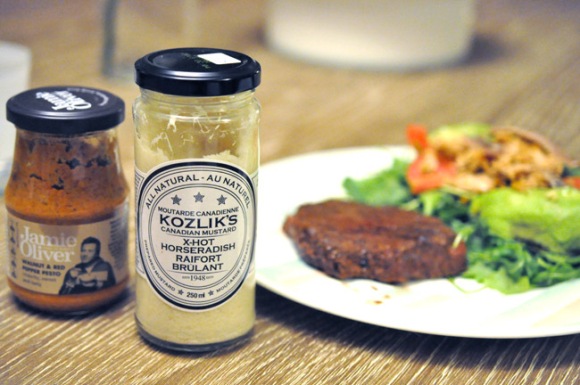I wish every day could be Kimchi Festival …
Stinky fermented vegetables? Yum yum gimme some. Kimchi is a divisive food. Not only is it a cornerstone of Korean cuisine (and inescapable in Korean food), it’s dearly beloved by many — including me — who would have a tough time explaining what they find so appealing about pickled and fermented cabbage.
But it’s just so great.
However, before we eat it, let’s ask: Is kimchi paleo?
My concern isn’t about the nutritional profile of the finished product. I don’t obsess about gut flora or antinutrients or any of that stuff that so bothers a lot of paleo types. I just want to eat foods that we consumed before the invention of agriculture because I reckon it’s a good bet we’re well-adapted to them. When I decide whether I can eat something, what I want to know is whether it’s made from foods that are part of the pre-agricultural human diet.
On the con side of the argument, kimchi is typically made with vinegar and salt as ingredients, neither of which do I consider caveman cuisine.
However, most paleo peeps seem OK with kimchi. Primal guru Mark Sisson is clearly on Team Kimchi, offering this recipe, which includes a great deal of salt — and optional fermented shrimp (mmm?).
The fact that kimchi is fermented is a non issue, according to Jennifer Higgins of Paleo Food List. She argues (without sources, but sensibly) that:
“Eating scavenged food including fallen fruits, nuts, and carcasses absolutely guarantees a steady supply of fermented foods covered in wild yeasts.”
Another way of looking at her reasoning is that a hunter-gatherer would have a tough time not eating fermented food. Good point.
Also counting in kimchi’s favour: We know for a fact that hunter-gatherers eat fermented meat and fish — the Inuit being particularly fond.
Meanwhile, Higgins gives us food for thought on the salt issue has as well. She points out that salt can be good, solid hunter-gatherer fare. To wit (and please forgive the long quote):
Other “Paleo experts” are certain that salt should be excluded on a Paleo diet. However, they forget that if Paleo Person was near the sea they engaged in practises like cooking in sea water and eating sea weed, thus providing concentrated sources of salty minerals. If Paleo Person was not a coastal dweller they most certainly drank the blood of the animals that they killed, another concentrated source of salty minerals. Eating bones and sprinkling salt-rich clay minerals are other hunter-gatherer practises that address a physiologic need for salt. Wild foraged greens are a vastly more concentrated sources of salty minerals than supermarket lettuce.
And notwithstanding all that, I should note that many of the kimchi brands available to me in Toronto are actually quite reasonable vis à vis sodium content.
In the end, my verdict is that kimchi is a suitable food for occasional paleo consumption. I don’t know that the added salt and the forward planning required represent true hunter-gatherer eating practices, but I also very much doubt that a little kimchi here or there will throw one off the paleo path.


